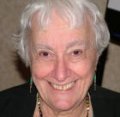Learning to Read and Reading to Learn in East Asian Languages
 Project Directors: David Yaden and Yetta Goodman (U Arizona)
Project Directors: David Yaden and Yetta Goodman (U Arizona)
Description: A summer institute in 2009, bringing together professionals in literacy development and linguistics with K-16 teachers, was central to this project. Teachers worked with authentic materials in East Asian languages (Chinese, Japanese and Korean) to enhance and expand their understanding of the development of literacy and cultural knowledge related to these languages. The institute included breakout sessions in Chinese, Japanese, and Korean that focused on their linguistic structures and orthographies as they are pertinent to the reading process and comprehension of written texts. During 2006-2008, the materials for the workshop were developed and bibliographies of research references related to the reading, teaching and linguistic structure of Chinese, Japanese, and Korean were collected, reviewed and selected for inclusion. Workshop products included a manual of reading strategy lessons; a bibliography of written materials, websites, CDs, and DVDs that can be used in the teaching of reading of East Asian languages; sets of procedures to help teachers select appropriate materials for their students based upon their interests and career needs. A monograph of the materials developed for and during the workshop was published by Prentice Hall (also for sale on Amazon, etc.)
Reading in Asian Languages: Making Sense of Writte n Texts in Chinese, Japanese, and Korean – Ken Goodman, Shaomei Wang, Mieko Shimizu Iventosch, and Yetta Goodman. Routledge. (2011).
n Texts in Chinese, Japanese, and Korean – Ken Goodman, Shaomei Wang, Mieko Shimizu Iventosch, and Yetta Goodman. Routledge. (2011).
Description: This volume was in its development for at least a decade, with many graduate students and faculty in reading research and Asian second language research and curriculum helping to shape it. In 2009, all four authors were part of a summer institute organized by CERCLL entitled Exploring Universals in the Reading Process: Applications Across Chinese, Japanese and Korean. The manuscript in its developing form was part of the curriculum.

